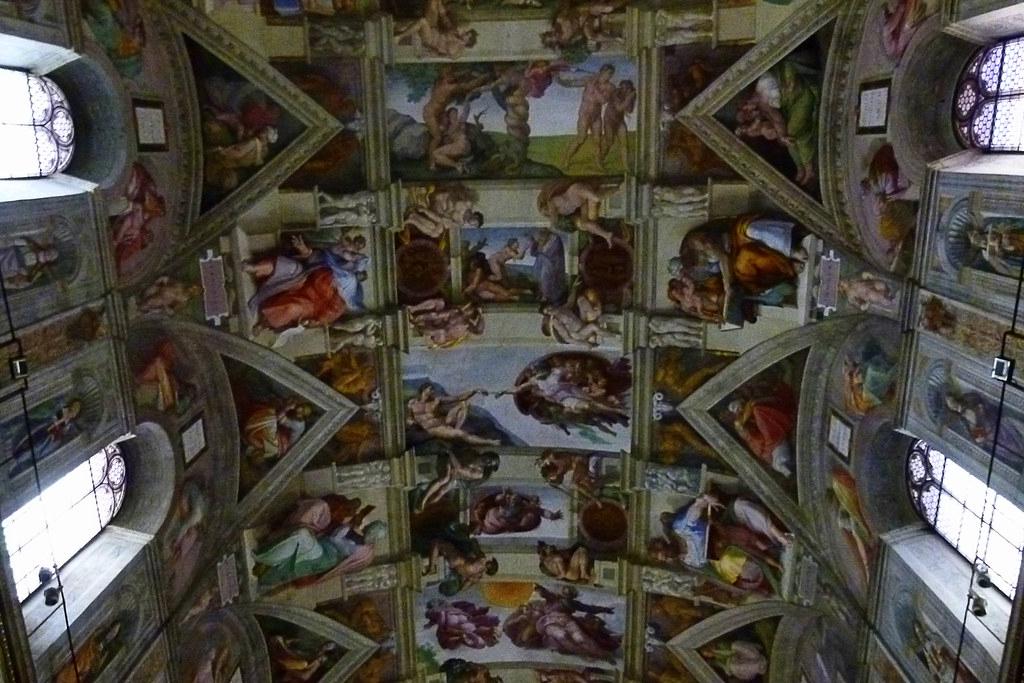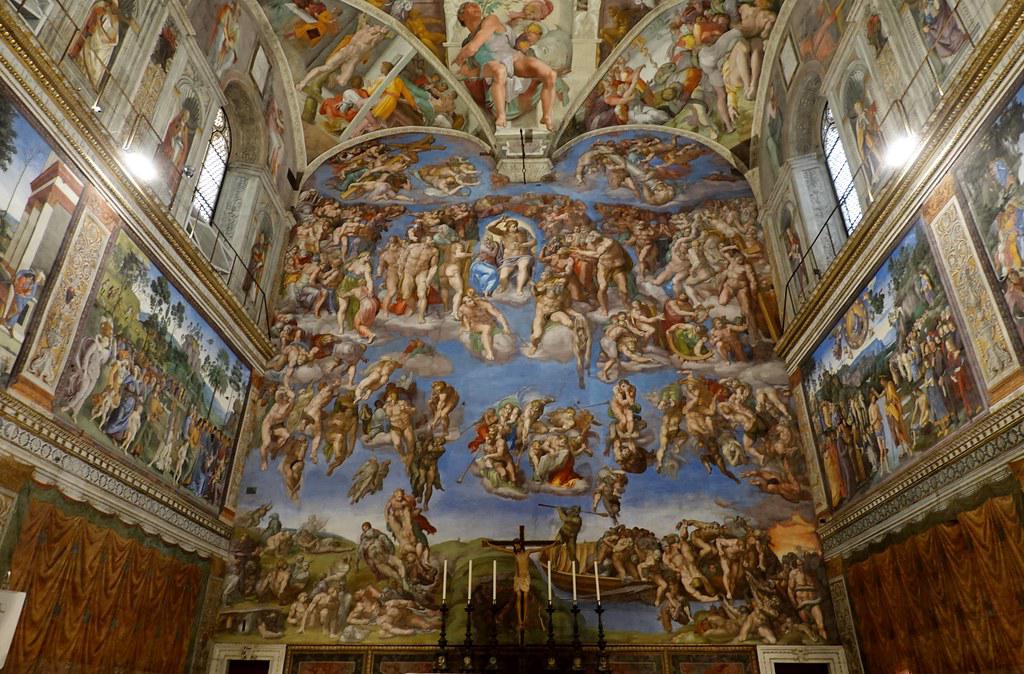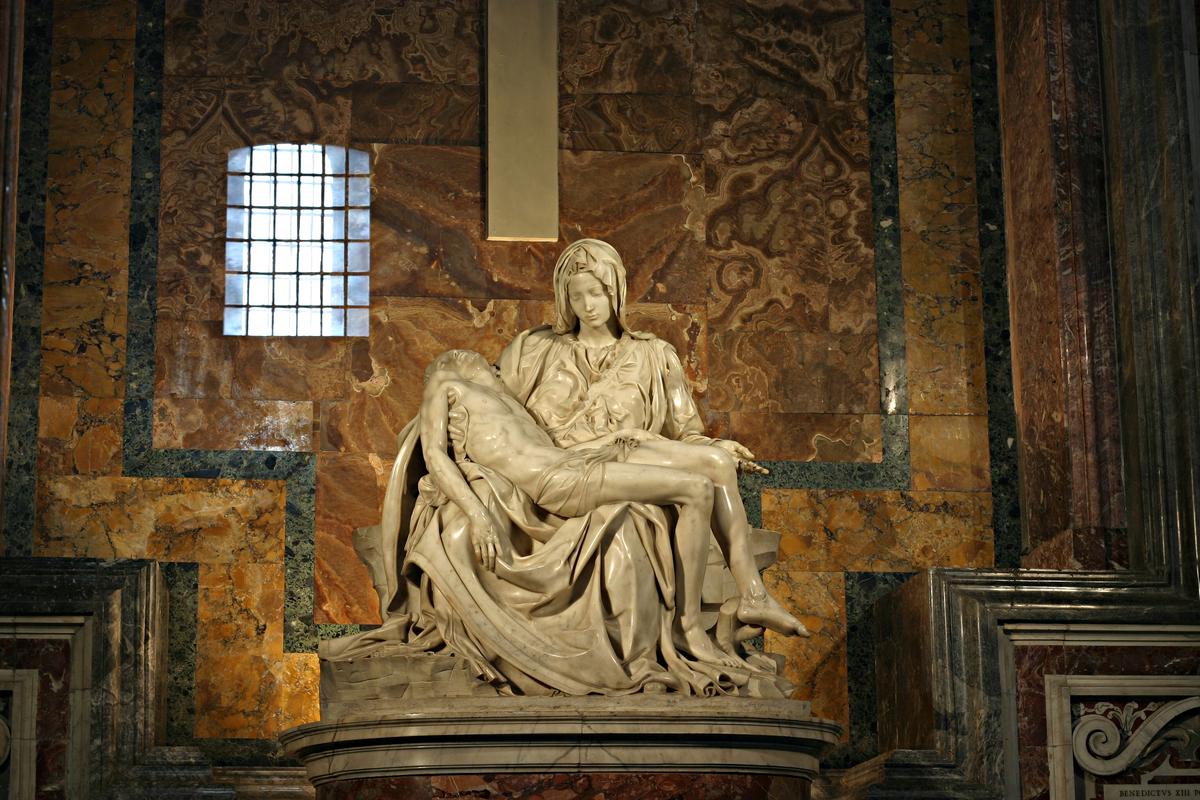Michelangelo's Use of Color
In Michelangelo's art, color plays a crucial role in storytelling and evoking emotion. Even in his sculptures, where color is subtle, it gives dimension to the marble, making figures like David seem alive. When Michelangelo did use paint, as on the Sistine Chapel ceiling, he created vibrant scenes full of meaning.
The Sistine Chapel's creation scene shows Adam reclining amidst lively hues. The colors draw the eye upward and highlight the separation between mortal and divine. In the Doni Tondo, swirling reds, greens, and blues reflect Renaissance ideals while connecting the holy family to human viewers.
Michelangelo's sketches use subtle color to guide the eye and emphasize forms. In The Last Judgment fresco, contrasting shades of blue and orange create tension, reflecting themes of salvation and damnation.
Despite his preference for sculpture, Michelangelo's use of color in paintings adds depth to his narratives. He shows that a well-placed hint of color can be as effective as a full palette, leaving a lasting impression on viewers.

Color Theory in the Renaissance
The Renaissance saw heated debates about color theory, particularly between two schools of thought: disegno and colorito. Florence championed disegno, emphasizing drawing as the foundation of art. Michelangelo, known for his precise anatomical drawings, was rooted in this tradition.
Venice, on the other hand, celebrated colorito, where color took center stage. Venetian artists used color to build forms and convey emotion. While Michelangelo was Florentine, his work shows hints of Venetian influence, balancing form and color.
During this time, artists and philosophers explored color's emotional impact and scientific basis. Leonardo da Vinci's studies of light and shade enhanced depth in paintings, influencing artists like Michelangelo.
The rise of color theory transformed Renaissance art, inspiring artists to capture the essence of their subjects through both calculated form and vibrant hues. Michelangelo's work exemplifies this balance, combining precise technique with expressive color to create enduring masterpieces.
Impact of Color in The Last Judgment
In "The Last Judgment," Michelangelo uses color to heighten the fresco's emotional impact. Celestial blues contrast with fiery oranges and deep reds, creating a visual tension that mirrors the themes of salvation and damnation.
The artist's use of chiaroscuro adds depth to the scene. Golden tones illuminate saved figures, while darker shades envelop the damned. This play of light and shadow emphasizes the drama unfolding on the wall.
Michelangelo's color choices also define characters within the composition:
- Christ and the chosen wear pure white, symbolizing divine favor
- The damned are shrouded in darkness, underscoring their despair
- Vivid greens surround the angels, bringing life to their supernatural forms
By weaving color throughout "The Last Judgment," Michelangelo invites viewers to engage emotionally with the fresco. The palette becomes a powerful tool for storytelling, making the scene's impact resonate long after viewing.

Color and Emotion in Michelangelo's Pietà
The Pietà, one of Michelangelo's most moving sculptures, tells its story through the subtle colors of the marble itself. The white Carrara marble becomes a canvas for conveying sorrow and resignation. The stone's natural veining adds depth to the emotional narrative.
Michelangelo uses chiaroscuro – the interplay of light and shadow – to enhance the sculpture's impact. Natural light creates gentle shadows and highlights, wrapping the figures in an ethereal glow that amplifies the scene's solemnity.
The marble's varying tones emphasize different elements of the sculpture:
- The contrast between Mary's serene face and Christ's pallor draws the viewer's eye
- The stone's coolness mirrors the chill of grief
- Areas catching warm light hint at solace or acceptance
In the Pietà, Michelangelo demonstrates his ability to evoke powerful emotions without painted color. His masterful carving allows the marble's natural qualities to speak, creating a timeless work that continues to move viewers centuries later.

Michelangelo's Influence on Color in Art
Michelangelo's approach to color continues to influence artists today. His use of color as a communicative tool, whether in vibrant frescoes or subtle marble tones, set a new standard for artistic expression.
Future generations of artists built on Michelangelo's legacy, exploring color's emotional and psychological impact. You can trace a line from the Sistine Chapel's hues to the dramatic palettes of Baroque artists like Caravaggio.
Michelangelo's techniques – layering tones, using shadows to create mood, and employing color contrast for thematic tension – inspired artists to push boundaries. This influence is evident in movements like Impressionism, which revolutionized the use of color and light.
His impact extended beyond painting and sculpture to architecture and design. Modern artists continue to draw inspiration from Michelangelo's use of color to create immersive experiences and convey complex ideas.
Michelangelo's innovative approach to color opened new possibilities in art. His influence remains vibrant, encouraging artists to use color not just for visual appeal, but as a powerful tool for storytelling and emotional connection.
Michelangelo's art transcends time, speaking through color and form to touch the human spirit. His legacy in using color as a profound communicative tool continues to inspire, reminding us of the power art holds to evoke emotion and convey deep truths.
- Vasari G. The Lives of the Most Excellent Painters, Sculptors, and Architects. 1550.
- Dolce L. Dialogue on Painting. 1557.
- Gilbert CE. Michelangelo. New York: McGraw-Hill; 1967.
- Hartt F. Michelangelo: The Complete Sculpture. New York: Harry N. Abrams; 1969.
























